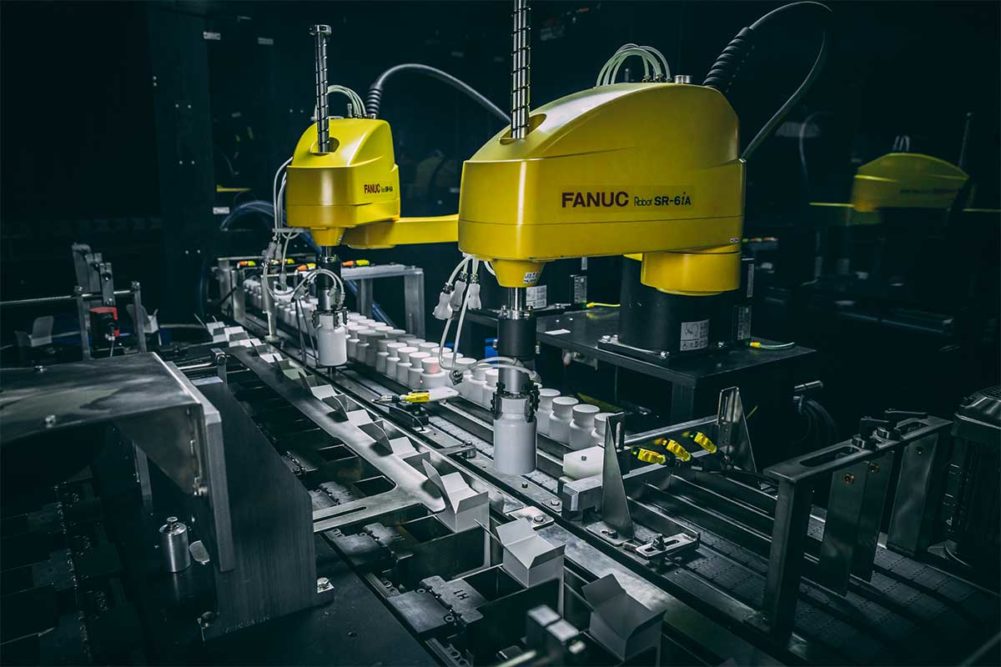Bakers now relying on robotics to reduce labor and streamline packaging for everything from cookies and crackers to croissants, Danish and more. However, product type isn’t the only complication when it comes to robotic packaging.
Bakeries need strict processing controls to ensure product consistency, so they fit into packages. Just a little bit of variation can make for a long day on a high-speed system.
“If you are placing cookies into a tray by hand, you can squeeze them in there if they’re slightly out of spec,” explained Dave Watson, food, bakery and snacks engineering subject matter expert for The Austin Co. “If they’re not in spec with a robot, you may end up damaging the products or creating downtime or other inefficiencies in the line. People can figure out how to get products into packaging. Robots can’t. That was one of the early lessons we had from working with robotics.”
Some items are just easier for robotics to package.
“With many snack bars, the end effector can be as simple as a standard set of bellowed suction cups linked with a standard filtering system as snack bars typically don’t generate a lot of crumbs and are typically not very porous,” said Jerry Buckley, south central sales manager, BluePrint Automation. “However, other items like croissants and rolls require customized end effector solutions due to their variable sizing and high degree of crumbs or oil that can lead to maintenance requirements that a plant may not have capacity to deal with.”
Conventional wisdom may indicate it’s easier to pick and place packaged products than unwrapped or “bare” ones. This is not always true, noted Rick Hoskins, chief executive officer of Colborne Foodbotics.
“There are many challenging applications specific to handling trays, cartons or cases, and we always fall back to our testing process to mitigate risk in those applications,” he said. “When handling bare products, the biggest difference usually is in the sanitary design of the overall system.”
Felix Pang, sales application specialist, ABI Ltd. stated that trays, cartons and cases can limit a robot’s range of motion.
“Some end effectors require clearance to release their grip on the product, which may be restricted within a packing container,” he observed. “If a particular pack pattern is needed, that will change the range of motion. That determines the grip required, which then dictates the type of tool needed.”
Alex Kuperman, CEO of ABI Ltd., recommended a thorough analysis to determine the best robot and EOAT for handling baked goods at high throughput rates. Sometimes, that can be a challenge.
“We frequently deal with products that are hot, sticky or delicate, and they require a thoughtful approach,” he said. “How do we uphold product integrity while maintaining a proper grip on it to execute an action at the correct speed?”
Primary and secondary packaging also impact the type of EOAT.
“Usually when unpackaged products are handled, the end effector tends to be a soft grip with multiple finger-like grips that pick up the product in the same way a human would pick it up,” said Jamie Bobyk, marketing manager, Apex Motion Control. “Another example of primary packaging is removing baked muffins from muffin tins with an end effector equipped with tiny needles that are gently inserted into the muffin, and the muffins are then lifted from the pan and placed into clamshells and released into the individual pockets of the clamshell.”
He said a single head equipped with multiple air-controlled suction cups will then lift packaged bread or clamshells with muffins from a conveyor and place them into preformed boxes.
Mr. Buckley said some end effectors require customization to properly package certain items.
“If loading a plastic tray, the position where the products are to be placed may be a tight-fitting pocket within the tray, so the end effector needs to be designed to keep the product very stable for proper positioning or to allow the tool to fit down inside the pocket if products are to be stacked inside the pockets,” he explained. “With carton or case loading, generally the fit of the product is a bit looser and doesn’t require as much customization.”
In the future, Mr. Watson said, look for further advances in technology, ranging from safer collaborative robots (cobots) to greater smart systems that learn while they work. It’s a far cry from when he first started working with robotics some 30 years ago, he explained.
“Just think of AI technology and adaptive robotics working right alongside humans without cages and other protective measures around them,” he said. “We’re going to see more of that in the coming years as they become more readily available. That’s going to open an entirely new opportunity for automation for generations to come.”
This article is an excerpt from the June 2022 issue of Baking & Snack. To read the entire feature on Robotics in Packaging, click here.





